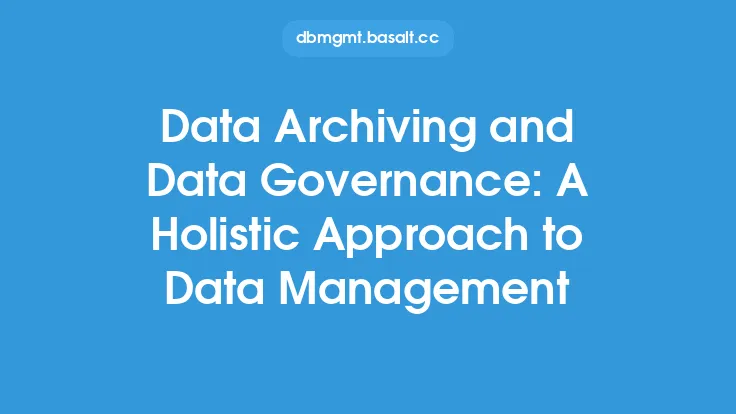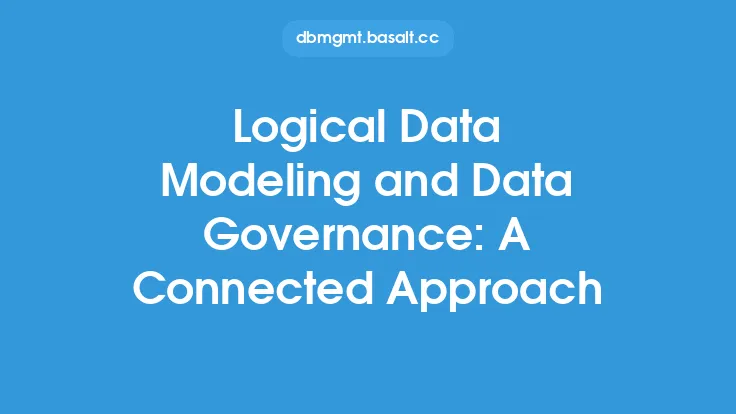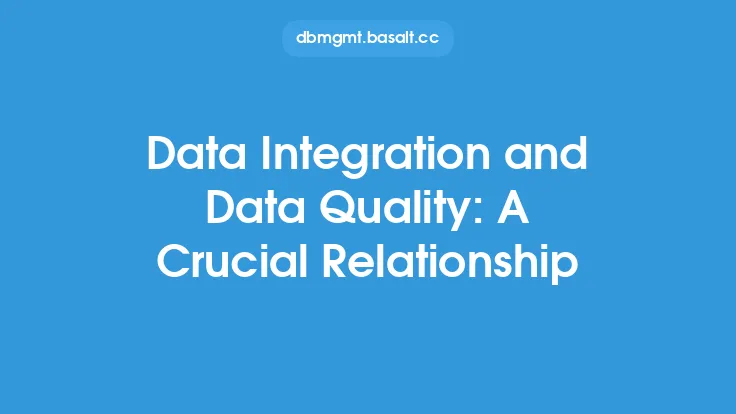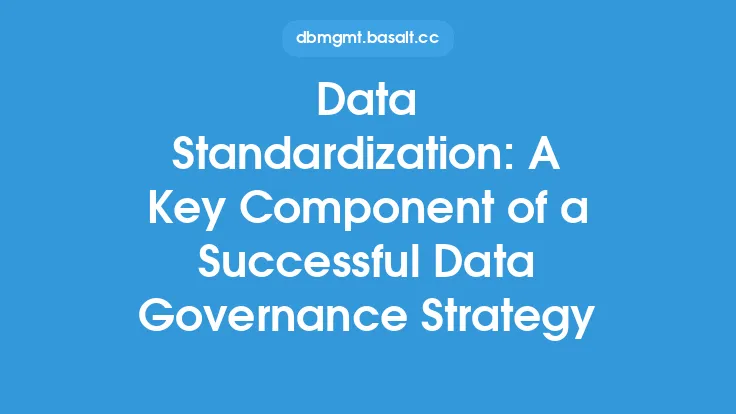Data quality and data governance are two interconnected concepts that are essential for organizations to manage their data effectively. Data quality refers to the accuracy, completeness, and consistency of data, while data governance refers to the policies, procedures, and standards that ensure data is managed and used in a way that is consistent with organizational goals and objectives. In this article, we will explore the importance of data quality and data governance, and provide a comprehensive approach to implementing these concepts in an organization.
Introduction to Data Quality
Data quality is a critical aspect of data management, as it directly affects the accuracy and reliability of business decisions. High-quality data is essential for organizations to make informed decisions, improve operational efficiency, and reduce costs. Data quality issues can arise from various sources, including data entry errors, inconsistent data formats, and lack of standardization. To ensure data quality, organizations must implement data quality checks, such as data validation, data cleansing, and data normalization. These checks help to identify and correct errors, inconsistencies, and inaccuracies in the data.
Data Governance Framework
A data governance framework is a set of policies, procedures, and standards that ensure data is managed and used in a way that is consistent with organizational goals and objectives. The framework should include roles and responsibilities, data quality standards, data security policies, and data retention policies. The framework should also include a data governance structure, which defines the organizational structure and decision-making processes for data management. A well-defined data governance framework helps to ensure that data is accurate, complete, and consistent, and that it is used in a way that is consistent with organizational goals and objectives.
Data Quality Metrics
Data quality metrics are used to measure the accuracy, completeness, and consistency of data. These metrics can include data accuracy rates, data completeness rates, and data consistency rates. Data quality metrics can be used to identify areas where data quality is poor, and to track improvements in data quality over time. Some common data quality metrics include:
- Data accuracy rate: This metric measures the percentage of data that is accurate and free from errors.
- Data completeness rate: This metric measures the percentage of data that is complete and free from missing values.
- Data consistency rate: This metric measures the percentage of data that is consistent and free from inconsistencies.
- Data timeliness rate: This metric measures the percentage of data that is up-to-date and free from outdated values.
Data Governance Tools
Data governance tools are used to support the implementation of a data governance framework. These tools can include data quality software, data governance software, and data analytics software. Data quality software is used to perform data quality checks, such as data validation, data cleansing, and data normalization. Data governance software is used to manage data governance policies, procedures, and standards. Data analytics software is used to analyze data and provide insights into data quality and data governance.
Implementing Data Quality and Data Governance
Implementing data quality and data governance requires a comprehensive approach that includes several steps. The first step is to define a data governance framework that includes roles and responsibilities, data quality standards, data security policies, and data retention policies. The second step is to implement data quality checks, such as data validation, data cleansing, and data normalization. The third step is to establish a data governance structure that defines the organizational structure and decision-making processes for data management. The fourth step is to provide training and awareness programs for employees on data quality and data governance. The final step is to continuously monitor and evaluate data quality and data governance, and to make improvements as needed.
Best Practices for Data Quality and Data Governance
There are several best practices for data quality and data governance that organizations can follow. The first best practice is to establish a clear data governance framework that includes roles and responsibilities, data quality standards, data security policies, and data retention policies. The second best practice is to implement data quality checks, such as data validation, data cleansing, and data normalization. The third best practice is to establish a data governance structure that defines the organizational structure and decision-making processes for data management. The fourth best practice is to provide training and awareness programs for employees on data quality and data governance. The final best practice is to continuously monitor and evaluate data quality and data governance, and to make improvements as needed.
Challenges and Opportunities
There are several challenges and opportunities associated with data quality and data governance. One of the main challenges is the lack of awareness and understanding of data quality and data governance among employees. Another challenge is the lack of resources and budget to implement data quality and data governance initiatives. However, there are also several opportunities associated with data quality and data governance, such as improved decision-making, increased operational efficiency, and reduced costs. Additionally, data quality and data governance can help organizations to comply with regulatory requirements and to improve their reputation and credibility.
Conclusion
In conclusion, data quality and data governance are essential for organizations to manage their data effectively. A comprehensive approach to data quality and data governance includes defining a data governance framework, implementing data quality checks, establishing a data governance structure, providing training and awareness programs, and continuously monitoring and evaluating data quality and data governance. By following best practices and addressing challenges and opportunities, organizations can improve their data quality and data governance, and achieve their goals and objectives.





